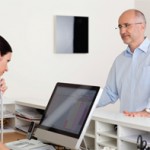I have been practicing rheumatology for seven years. I was fortunate to be the only independent rheumatologist in a 40-mile radius fresh out of my fellowship. That experience gave me robust exposure to bread-and-butter rheumatology, where access to multiple specialties was not readily available and you were often left to yourself to make calls based on your clinical judgment. Patients often had to travel hours to receive my services at that location.

Dr. Dhillon
I have also had the opportunity to work in an academic tertiary referral center where the rheumatology division had more than 30 rheumatologists on staff. I was amazed that, even then, some patients were traveling hours for their appointments. On top of that, patients were waiting months for their initial appointments.
Based on my experiences, I made a choice and a decision: Make rheumatology more accessible to my patients.
What that Means
In my clinical practice I tried to see remote patients less frequently, with more time gaps between appointments than I would like. I used to call my remote patients between appointments. Although the calls were not reimbursed, it gave me satisfaction to know that I had helped someone.
Once the COVID-19 pandemic hit, the doors of telemedicine opened and reimbursement for those visits was competitive. I started offering telerheumatology services in rural areas. From my experience as a community rheumatologist, I have come to realize that rheumatology is an underrepresented specialty and that primary care providers and patients are appreciative of getting access to it, even if that entails only telerheumatology services.
Although telerheumatology brings care to patients in remote areas, it has shortcomings. For example, telerheumatology is more labor intensive than seeing patients in clinic; it takes more effort on the physician’s part to develop a relationship and trust with the patient. Also, telerheumatology shows less profit than traditional rheumatology because physicians cannot perform procedures.
Another dilemma is that doing an in-person physical exam is not possible. In the practice of rheumatology, synovitis noted on an exam workup is usually indicative of an inflammatory arthritis even if the bloodwork is normal. In those cases, a physical exam is very helpful in distinguishing between inflammatory arthritis and non-inflammatory conditions, like fibromyalgia.
Lastly, you need excellent support staff for the telerheumatology office location where patients come in for their initial consultation and staff who can help with prior authorizations if needed.



